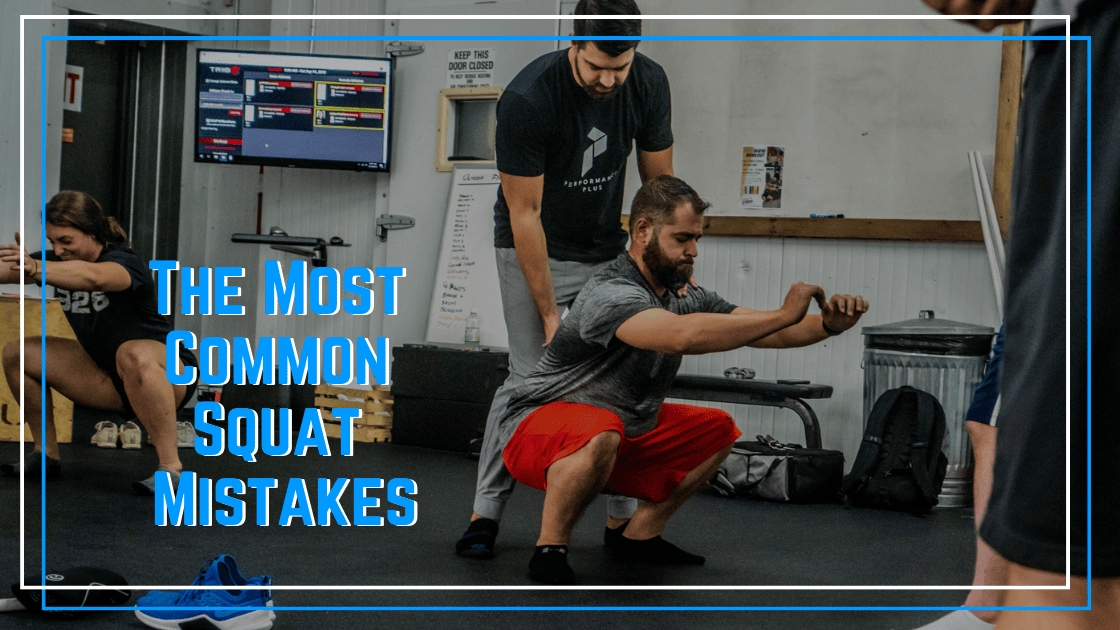If you are struggling with squats, whether due to pain or lack of progress, then make sure you aren’t making any of the mistakes covered in this video.
Most Common Squat Mistakes
#1. Learn to keep your upper back tight.
Lifting weights and performing compound exercises like squats require proper form and technique to maximize results. One common mistake that many people make during squats is not keeping the upper back stiff.
Lack of upper back often results in the entire spine losing stiffness and missed lifts.
One effective cue is to think of doing a face pull while squatting. To do this, imagine pulling your shoulder blades together and down as if you were performing a face pull exercise. This will help activate the muscles of the upper back and create a stable platform for the squat.
#2. Learn how to better brace your spine for lifting heavy loads.
When lifting maximal weights, we want athletes to increase intra-abdominal pressure to stiffen their core and spine. Athletes should take a big breath into their bellies and then tighten their abs on top of that air. This increased pressure helps to counteract the compressive forces of the barbell on your spine.
For added stiffness during your lifts, consider using a weightlifting belt to increase intra-abdominal pressure further.
Squat Mistakes #3. Understand how to initiate your descent.
In the world of fitness and weightlifting, athletes use certain cues and techniques to enhance their performance and prevent injury. One such cue is the “sit back” cue, commonly used during squats and deadlifts. However, overemphasizing this cue can be detrimental to your form.
Too many coaches still over-emphasize the “sit back” cue when athletes squat. We want the knees and hips to break simultaneously to optimally spread the load across the knees, hips, and back.
#4. Avoid a “good morning squat” pattern.
One common squat fault that many people experience is when the hips shoot back or up first during the movement. This is referred to as a Good Morning Squat fault.
The main cause of this squat fault is a relative weakness in the quadriceps. When the quads are weak, the body compensates by relying too much on the posterior chain, which includes the glutes, hamstrings, and lower back muscles. As a result, the hips shoot back or up first during the squat movement.
The solution to this issue is to strengthen the quadriceps. By focusing on quad-dominant exercises, the quads can be properly developed and balanced with the posterior chain.
Squat Mistakes #5. Identify your optimal squat stance.
Many athletes struggle with finding the best stance that suits their body mechanics and preferences. Failing to find the right positioning can lead to discomfort, decreased performance, and even potential injuries. Every athlete has different hip boney anatomy, anthropometrics, and mobility. These factors mean that every athlete will have a different squat stance. Fortunately, there is a simple solution to this problem: experimenting with different stances and toe angles to find the optimal squatting position.
Stance Width
The first aspect to consider when finding the best squat stance is the width between your feet. This can vary from person to person based on factors such as hip mobility and body structure. To find your ideal stance width, start with a shoulder-width stance and gradually adjust wider or narrower.
Toe Angle
Your toe angle is another important factor that influences squatting form. Some individuals find it more comfortable to have their toes pointing straight ahead, while others may prefer a slight outward angle. Experiment with different toe angles and see how it affects your stability and comfort during the squat.






